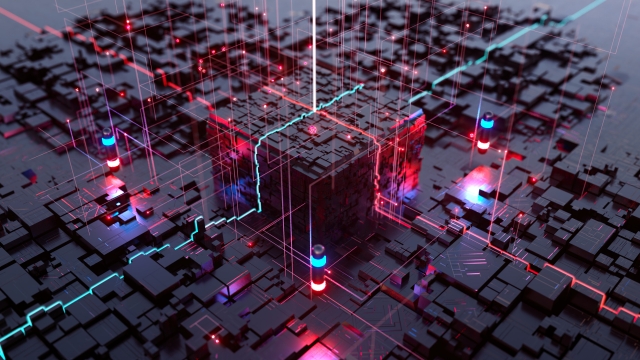
Unveiling the Uncanny: The Fascinating World of Deepfake Technology

In today’s rapidly evolving digital age, we find ourselves increasingly immersed in a world where reality and illusion converge. The rise of deepfake technology has captivated and bewildered both experts and the general public alike. With its uncanny ability to manipulate and fabricate audiovisual content, deepfake technology has become an intriguing and, at times, unsettling phenomenon.
At its core, deepfake technology utilizes powerful algorithms and artificial intelligence to superimpose a person’s face onto another’s body, seamlessly blending them together in a way that can be nearly indistinguishable from reality. This groundbreaking technology has found its place in various fields, from entertainment and social media to politics and journalism. While the potential applications of deepfakes may appear limitless and awe-inspiring, they also raise important ethical concerns and challenges.
As we embark on this exploration of the fascinating world of deepfake technology, our journey will take us through the intertwined threads of innovation, deception, and the ever-changing nature of truth in our increasingly digitalized world. Join us as we unravel the intricacies and implications of this technology, shedding light on its potential consequences and the measures being undertaken to address the challenges it presents. Step into the depths of the uncanny, as we unveil the captivating world of deepfakes.
How Deepfake Technology Works
Deepfake technology is truly revolutionary, allowing us to enter a whole new realm of creative possibilities. This remarkable technology employs artificial intelligence algorithms, specifically generative adversarial networks (GANs), to manipulate and alter digital content, typically videos or images. Through the power of deep learning, deepfake technology enables the synthesis of incredibly realistic and convincing fabricated content.
The first step in the deepfake creation process involves gathering a large dataset of real images or videos of the target subject. This dataset serves as the foundation for training the GANs. These algorithms consist of two parts: the generator and the discriminator. The generator analyzes the dataset and learns to generate new content, while the discriminator strives to distinguish between real and fake samples.
During the training phase, the generator receives feedback from the discriminator, continually adjusting and improving its ability to create more convincing deepfakes. As the training progresses, the generated content becomes increasingly difficult to differentiate from real footage. This intricate dance between the generator and discriminator is what makes deepfake technology so astonishingly advanced.
Once the training is complete, the deepfake model is capable of generating new content that convincingly replicates the appearance and actions of the target subject. By feeding the model with new input, be it an image or a video, the deepfake algorithm can seamlessly blend the desired attributes with the original content, creating a deepfake composite that is nearly indistinguishable from reality.
Deepfake technology holds immense potential, ranging from harmless entertainment to powerful filmmaking tools. However, it also raises ethical concerns and potential misuse. It is crucial to be aware of the implications and ramifications of this emerging technology as we delve deeper into the uncanny world of deepfakes.
Application and Impact of Deepfake Technology
Using deepfake technology has had significant implications across various domains. This advanced technique has found its application in numerous sectors, including entertainment, politics, and cybersecurity.
In the entertainment industry, deepfakes have been deployed to bring deceased actors back to life on the big screen. By leveraging deep learning algorithms, filmmakers can recreate the likeness of beloved actors from past eras, enabling them to reprise roles or appear in entirely new narratives. This application of deepfake technology has sparked both excitement and controversy, as it challenges traditional notions of authenticity and raises ethical concerns.
In the realm of politics, the impact of deepfake technology cannot be underestimated. It has the potential to manipulate public opinion, blur the lines between truth and fiction, and undermine trust in our information sources. Political deepfakes can convincingly portray someone saying or doing something that never actually occurred, leading to damaging consequences for individuals and the wider democratic process. As a result, there is a growing urgency to develop techniques that detect and mitigate the spread and effects of such deceptive content.
Additionally, deepfake technology has significant implications for cybersecurity. With the ability to create hyper-realistic digital forgeries, cybercriminals can use this technology to create convincing phishing attacks, impersonate individuals, or produce fraudulent evidence. This presents a significant challenge for businesses and individuals alike in terms of ensuring data security and protecting against identity theft.
In conclusion, the application and impact of deepfake technology are far-reaching. From its use in entertainment to its potential to shape political narratives and influence cybersecurity, this technology raises important ethical questions and necessitates ongoing research and development to address its implications effectively.
Ethical and Legal Implications of Deepfakes
Deepfake technology has given rise to a multitude of ethical and legal concerns. With its increasing accessibility and sophistication, the implications of this technology have become more profound. From a moral standpoint, deepfakes raise unsettling questions about personal privacy, consent, and the potential for abuse.
https://faceswap.akool.com/
One of the foremost ethical concerns surrounding deepfakes is the infringement upon an individual’s privacy. The ability to manipulate videos and images with such precision means that anyone can find themselves at the mercy of malicious or deceitful intent. Without explicit consent, deepfakes can be used to create compromising or false content, thereby causing irreparable damage to a person’s reputation and well-being. Striking a balance between the freedom of expression and the protection of personal privacy becomes an imperative task in the age of deepfakes.
Moreover, deepfakes pose daunting challenges to the integrity of information and trust in the digital realm. As this technology becomes more widespread, it becomes increasingly difficult to discern what is real from what is fabricated. Instances of misinformation, propaganda, and fake news can be perpetuated by misleading deepfakes, further eroding trust in media sources and public discourse. This undermines the very fabric of democratic societies, where access to reliable information is essential for the functioning of a well-informed citizenry.
From a legal perspective, the rapid development of deepfake technology has outpaced the establishment of adequate legal frameworks. The ability to superimpose someone’s likeness onto another individual can lead to serious legal ramifications. Deepfakes have the potential to facilitate identity theft, cyberbullying, and even incrimination through the creation of fabricated evidence. Addressing these legal challenges requires a comprehensive approach that takes into account privacy laws, intellectual property rights, and potential criminal activities associated with the misuse of deepfakes.
As the boundaries of deepfake technology continue to be tested, it is crucial for society to grapple with the profound ethical and legal implications it presents. Striking a balance between technological advancements and safeguarding individual rights is a complex task, one that demands ongoing dialogue, collaboration, and the development of robust legal frameworks to protect individuals from the potential harm that deepfakes can inflict.



